Discover 11 hidden attractions, cool sights, and unusual things to do in Laurel (United States). Don't miss out on these must-see attractions: Laurel Park, Montpelier Mansion, and Laurel Museum. Also, be sure to include Oseh Shalom Synagogue in your itinerary.
Below, you can find the list of the most amazing places you should visit in Laurel (Maryland).
Table of Contents
Laurel Park
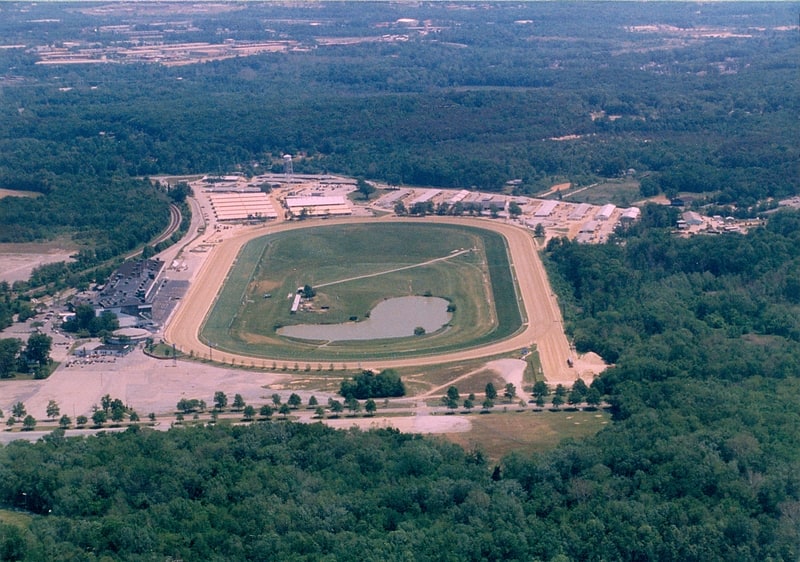
Racecourse in Maryland. Laurel Park is an American thoroughbred racetrack located just outside Laurel, Maryland which opened in 1911. The track is 1+1⁄8 miles in circumference. Its name was changed to "Laurel Race Course" for several decades until returning to the "Laurel Park" designation in 1994.[1]
Address: 3600 Laurel Fort Meade Rd, Laurel
Montpelier Mansion
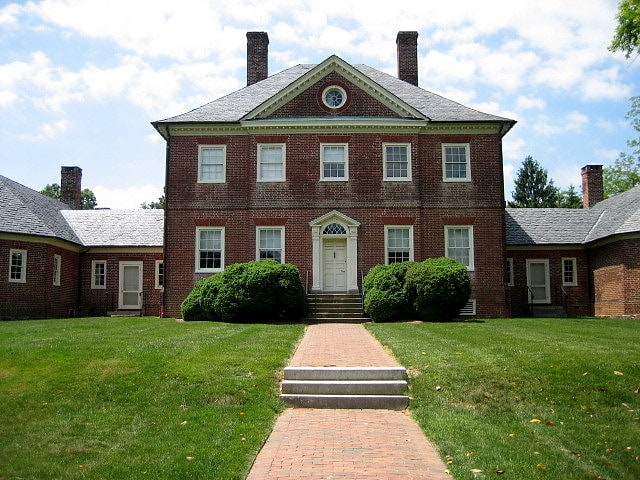
Museum in South Laurel, Maryland. Located south of Laurel in Prince George's County, Maryland, United States, Montpelier Mansion is a five-part, Georgian style plantation house most likely constructed between 1781 and 1785. It has also been known as the Snowden-Long House, New Birmingham, or simply Montpelier. Built by Major Thomas Snowden and his wife Anne, the house is now a National Historic Landmark operated as a house museum. The home and 70 acres remain of what was once a slave plantation of about 9,000 acres.
It was declared a National Historic Landmark in 1970, primarily for its architecture.[2]
Address: 9650 Muirkirk Rd, 20708 Laurel
Laurel Museum
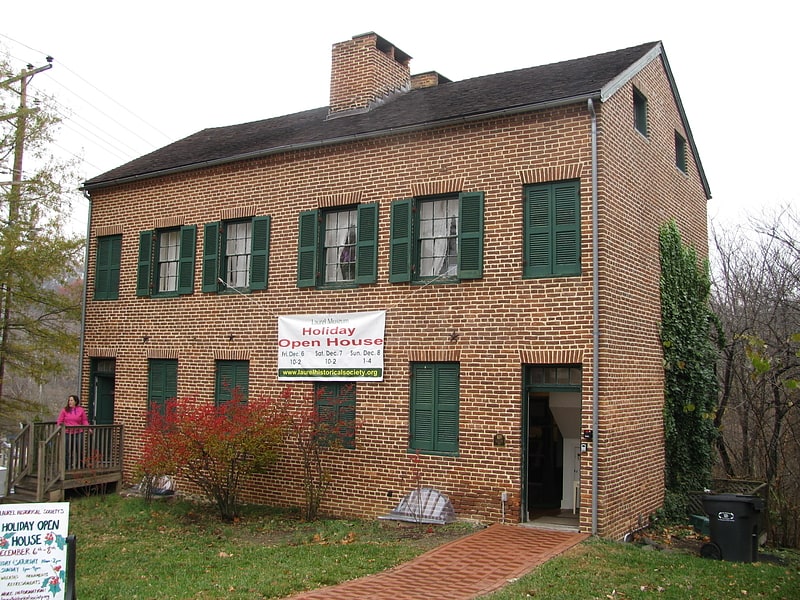
Museum in Laurel, Maryland. The Laurel Museum is a museum in Laurel, Maryland, in the United States. It is located in a mill workers' home that was built by Horace Capron between 1836 and 1840. It was restored by the City of Laurel, and opened to the public on May 1, 1996. Located on the northeast corner of 9th and Main Streets, the museum has exhibits that highlight the history of Laurel and its citizens. A gift shop is available and museum admission is free.
The 2,590-square-foot (241 m2) brick and stone building was built with four living units, and was later converted into a two-family house. It was then transformed into a commercial property, and before its abandonment in the 1970s was a rental home and storage warehouse. In 1985 the building was purchased by the City of Laurel from the State of Maryland.
The museum is operated by the Laurel Historical Society, a tax-exempt educational organization that was founded as the Laurel Horizon Society in 1976. The society received permission to use the city-owned building for a museum with the adoption of a resolution by the mayor and city council on February 25, 1991. The building was then renovated between 1993 and 1996, when it opened to the public. The museum's research library is named after John Calder Brennan, a local historian who died three months before the museum's opening.[3]
Address: 817 Main St, 20707-3429 Laurel
Oseh Shalom Synagogue
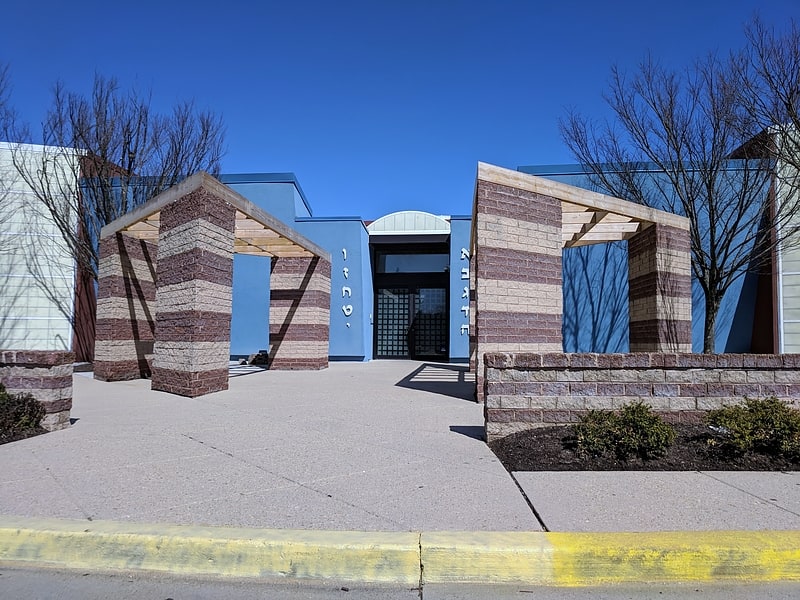
Synagogue in Prince George's County, Maryland. Oseh Shalom is the only synagogue in Laurel, Maryland, and one of 5 Reconstructionist synagogues in the Baltimore-Washington Metropolitan Area. Members of the community hail from many nearby areas, including Howard, Montgomery, Prince George's, and Anne Arundel counties. Oseh Shalom was founded in 1966, and affiliated with the Reconstructionist movement in 1979.
Oseh Shalom is known for its distinctive synagogue building, with its blue "wings" and glowing dome. Weekly Sabbath tefillah (prayer) services, religious school, adult education, High Holy Day and festival services and numerous other programs occur onsite. Oseh Shalom has a vibrant program for children from birth to Bar/Bat Mitzvah and beyond.
Daria and Josh Jacobs Velde, a married team of rabbis, became the congregation's rabbis in August 2017. Cantor Charles (Charlie) Bernhardt has been with Oseh Shalom since 1983.[4]
Address: 7515 Olive Branch Way, Laurel
Laurel Branch Library
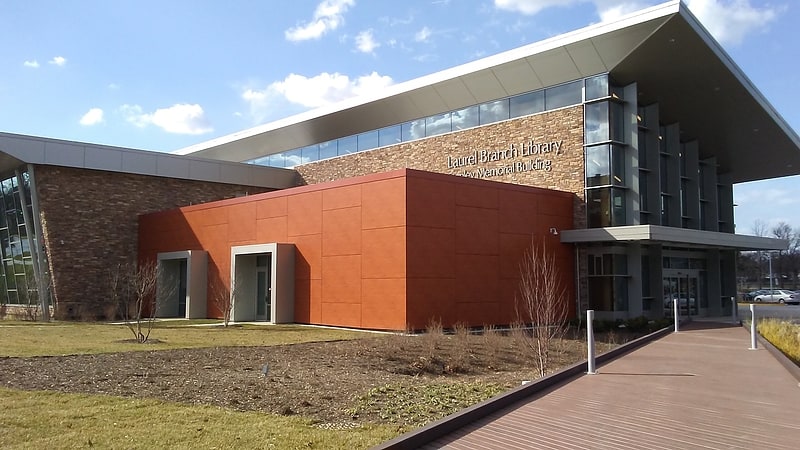
Branch library. Laurel Branch Library is the Laurel, Maryland branch of the Prince George's County Memorial Library System, at the intersection of Seventh Street and Talbott Avenue. The current Stanley Memorial Building opened to the public on November 28, 2016.
This branch's buildings have been named after the family of Charles H. Stanley, a city commissioner (1880–1882), mayor (1891–1893), and state comptroller (1911–1912). Friends of the Laurel Library, a philanthropic group of local community members, has supported the branch since January 1996.[5]
Address: 507 7th St, 20707 Laurel
Snow Hill
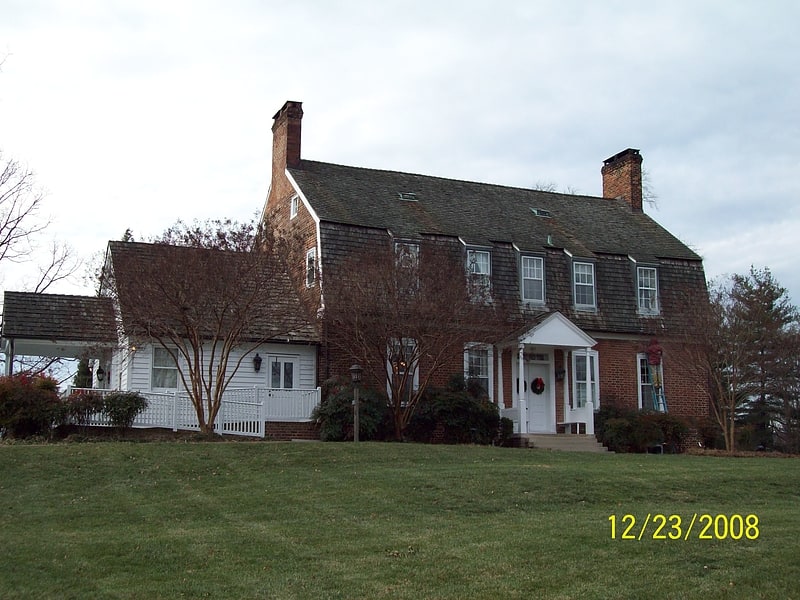
Manor house in Laurel, Maryland. Snow Hill is a manor house located south of Laurel, Maryland, off Maryland Route 197, in Prince George's County. Built between 1799 and 1801, the 1+1⁄2-story brick house is rectangular, with a gambrel roof, interior end chimneys, and shed dormers. It has a center entrance with transom and a small gabled porch. A central hall plan was used, with elaborate interior and corner cupboards. The original south wing was removed and rebuilt, and the home restored in 1940. The Late Georgian style house was the home of Samuel Snowden, part owner of extensive family ironworks, inherited from his father Richard Snowden. and is now owned and operated by the Maryland-National Capital Park and Planning Commission as a rental facility.
Snow Hill was listed on the National Register of Historic Places in 1974.[6]
Snowden Hall
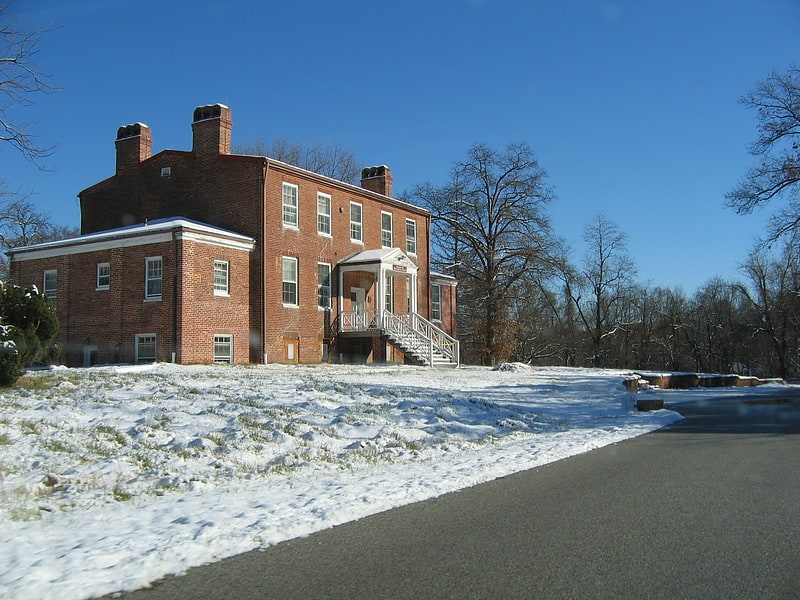
Snowden Hall is a historic house located on the grounds of the Patuxent Wildlife Research Center, outside Laurel in Prince George's County, Maryland, United States. It stands on open rolling ground approximately ¾-mile west of the Patuxent River.[7]
Souder House
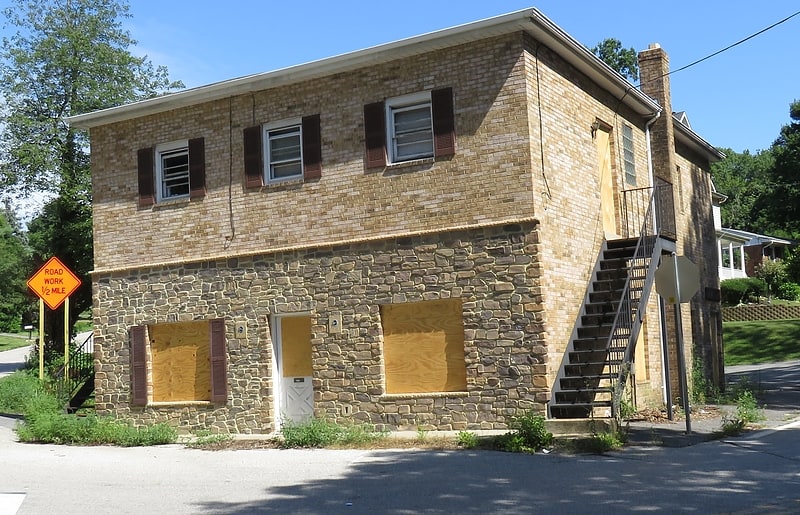
Building in North Laurel, Maryland. The Souder House is a historic commercial building located in Scaggsville, Maryland, Howard County, Maryland, now owned by the Howard County Government.
The building is two levels with stone veneer facing. The building is located on a former 250 acre slave plantation once owned by the Botterill Family, who the Howard County town of Botterill, Maryland are named after. It is inset in a graded fork of Old Scaggsville Road and All Saint's road, serving as the primary entrance to the mill town of Laurel, Maryland on the other side of the Patuxent River. A bridge served as the community link to the Avondale Mill and main street connecting to the historic B&O railroad stop. The building served as a bar, grocery store, fueling station, and hair saloon. Its last commercial owners were the Souder Construction Company. In December 2014, Howard County purchased the building for $325,000 holding a community meeting on its condition. In December 2015, the county held a meeting announcing its intention to demolish the building. The county did not publish a historical review, but claimed a historian had cleared the property because of its "mishmash" architecture.[8]
Gude House
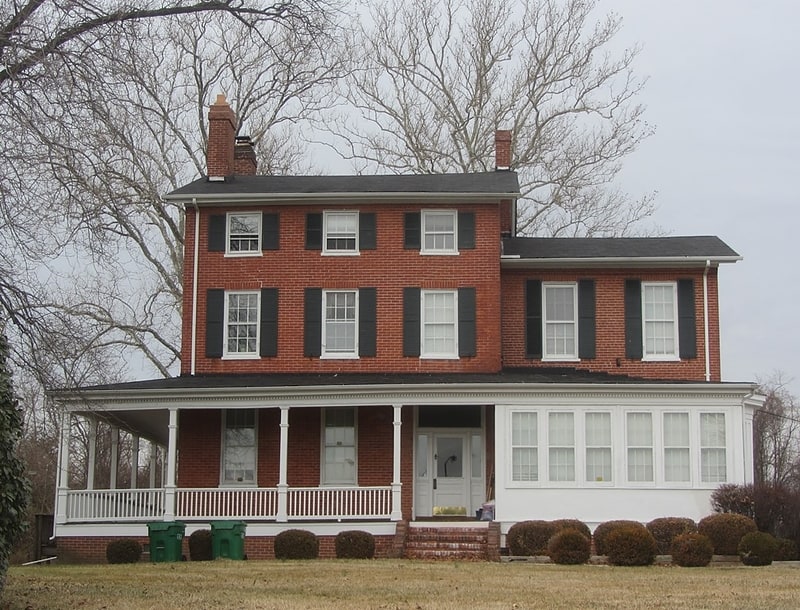
Building in Laurel. The Gude House is a historic house located in Laurel, Maryland in Prince George's, Maryland, United States.
The property was originally part of Snowden's New Birmingham Manor. Mary Tyson and her sisters, who had opened a seminary in Washington, D.C. in the 1800s, opened their second ("Alnwick") seminary in southwest Laurel in 1855 on part of the Snowden property they purchased, and the Society of Friends provided a non-secular curriculum. This three-story brick building was featured in an 1852 lithograph; fire destroyed the seminary building in 1920.
The three-story brick building with a kitchen addition and second wing were built in 1856 by John D. McPherson who bought 50 acres of land just south of the Alnwick Seminary building from the Tyson sisters. In 1866 the property was expanded with 8 acres purchased from Samuel Register. In 1875, French horticulturalist Armand Jardin purchased the property, living onsite until 1904. In 1926, after a succession of short-term owners, William Gude purchased and restored the property which remained in his family until 1980. Gude was a greenhouse and retail flower shop owner.
The property was subdivided in 1988 for commercial office parks at Laurel Lakes with 1.3 acres and the Gude house remaining.[9]
Harry and Fulton Gordon Property
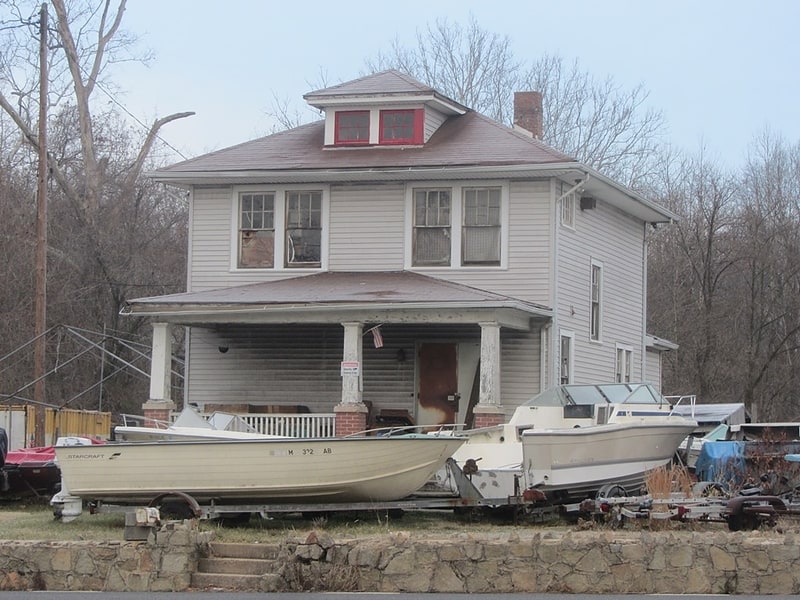
The Gordon Property is a site of one of the first residential subdivisions along the historic route one corridor in North Laurel, Maryland.
Prior to the industrial settlements of mills along the Patuxent river. The Gordon property was patented as part of Alexander and Absolute Warfield's estate "Warfield's Range", which was resurveyed as "Sappington's Sweep" as part of a 1731 inheritance to Thomas Sappington from his grandfather Thomas Rutland. What later became Route 1 was built along the property in 1749 and was operated as a turnpike from 1820 to 1865. In 1870, John and Elizabeth Water sold their interest in Sappington's sweep to William and Mary Cissel in 1890. The property was sold the same year for $35,000 to brothers Harry D. and Fulton R. Gordon from Bailey's Crossroads, who subdivided a tract on the Howard county side of the Patuxent river to form "North Laurel". The business office for the development was operated out of an office on 918F Street in Washington as Gordon & Bro, marketing real estate in the "suburbs" between Baltimore and Washington. By 1894, the Gordon brothers sold a portion of "North Laurel" for $64,000 to the Key Brothers & Company to finance the purchase of the Lincoln Hotel in Washington D.C. Fulton Gordon divorced shortly afterward and declared himself broke. The brothers built an American Foursquare on "Lot 10" prior to 1905 sitting prominently along route one with a large stone retaining wall. The house remained in their name until the late 1930s while the brothers developed land that would become Chevy Chase, Maryland. Land subdivision would be a booming business a century later, the "smart growth" features of tightly clustered lots featuring access to light rail services, walkable community and the county's first traffic circles remained largely undeveloped until the 1960s with some lots vacant today. Fulton R. Gordon was quoted as saying if the land had been given to him "I'd have been robbed".[10]
Capitol Technology University

Private university in Laurel, Maryland. Capitol Technology University is a private university in South Laurel, Maryland near Washington, DC. The university was founded in 1927 as the Capitol Radio Engineering Institute by a former US Navy Radioman. CREI changed its name to Capitol Institute of Technology in 1964, changed its name again to Capitol College in 1987, and assumed its present name in 2014. Capitol offers undergraduate and graduate programs specializing in engineering, computer science, information technology, and business. It is classified among "Special Focus Institutions—Schools of Engineering" and is a National Center of Academic Excellence in Information Assurance Education.
Capitol Technology University, through its Department of Computer Science, provides degree programs in the concentration areas of Computer Science, Artificial Intelligence and Data Science, at each of the bachelors, masters and doctoral levels of study.[11]